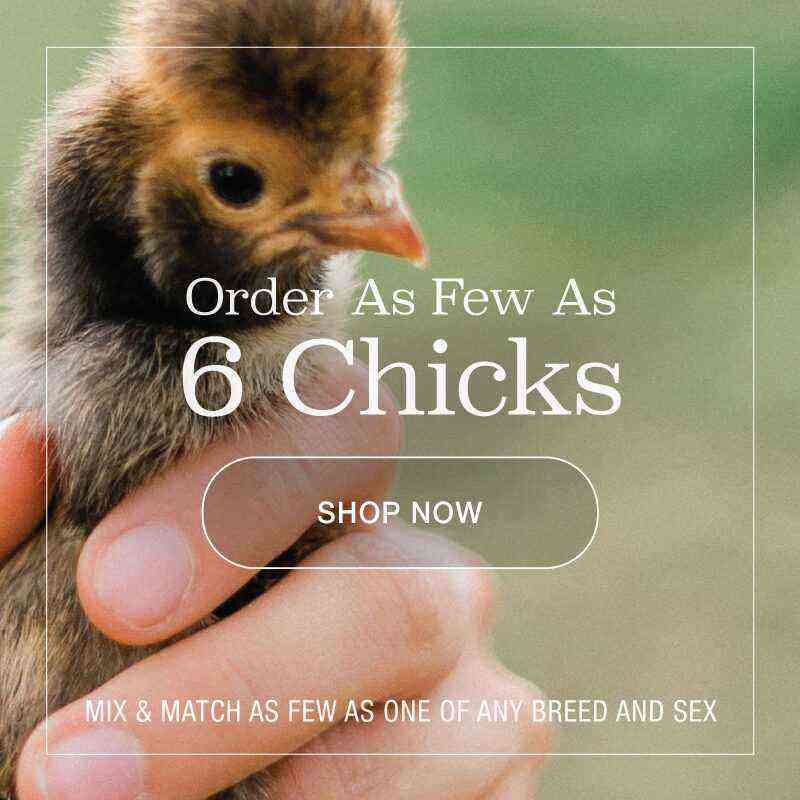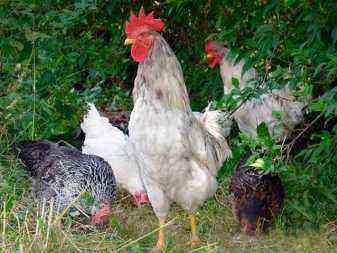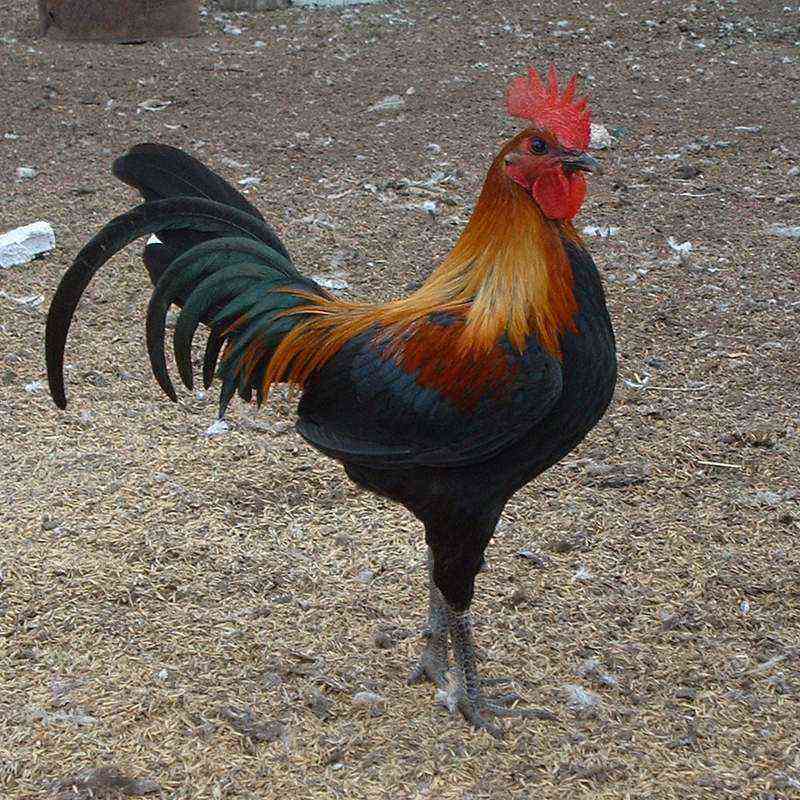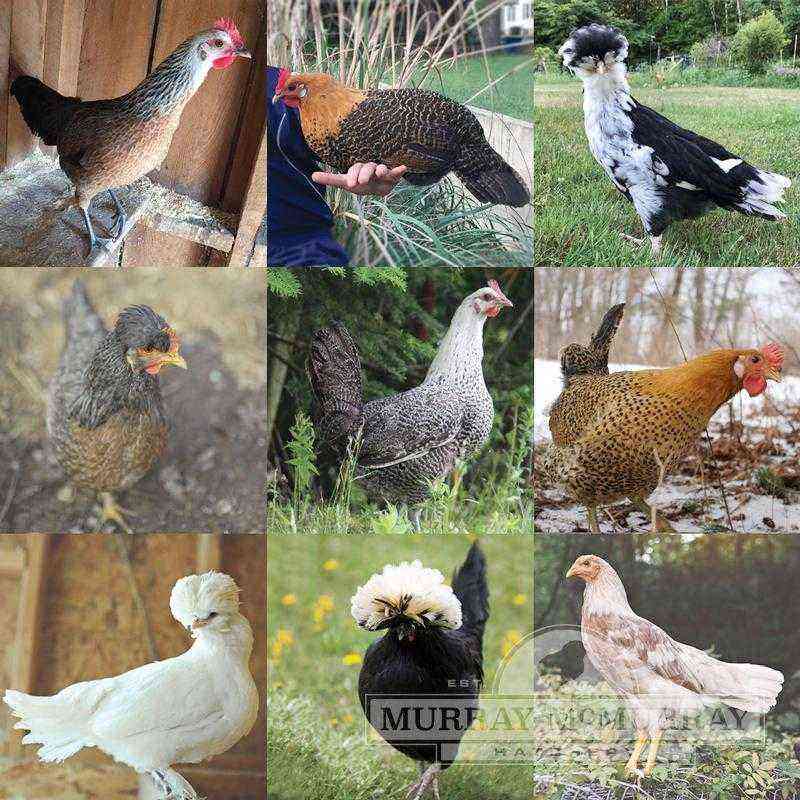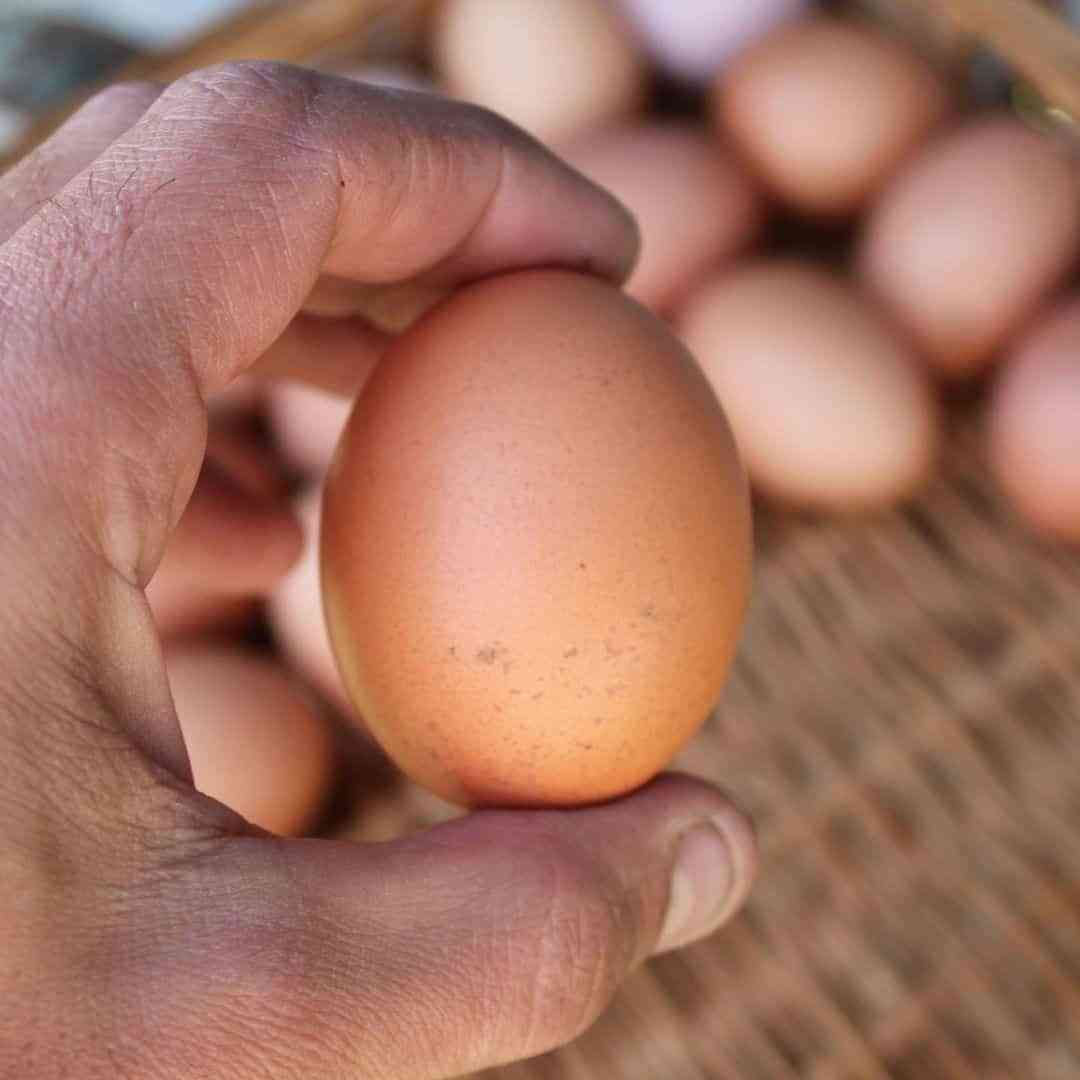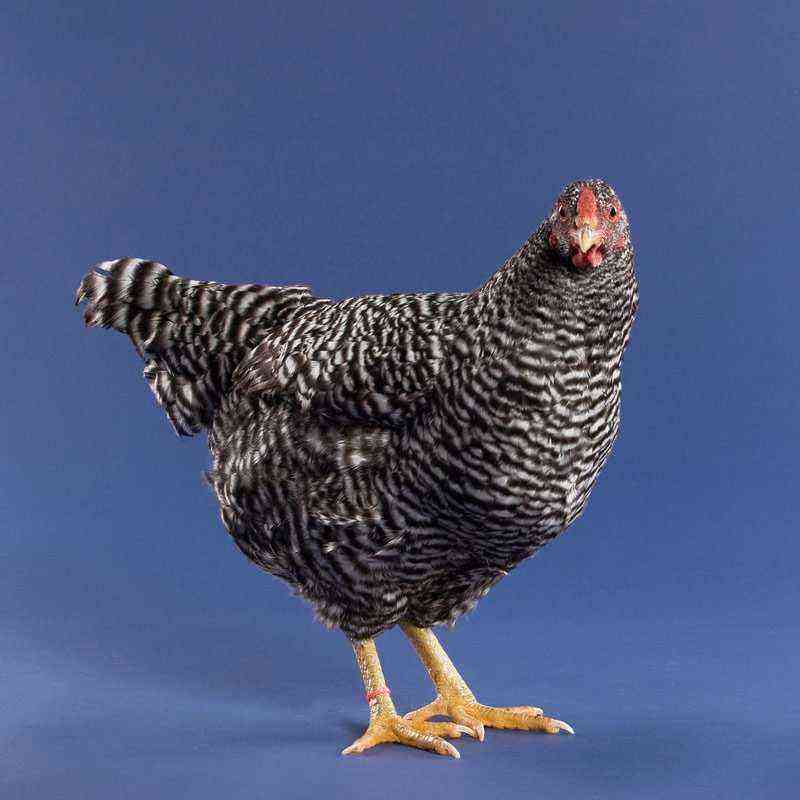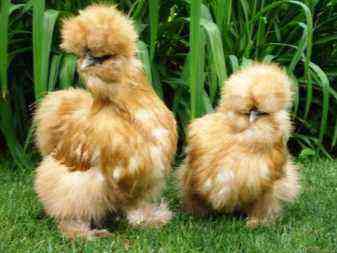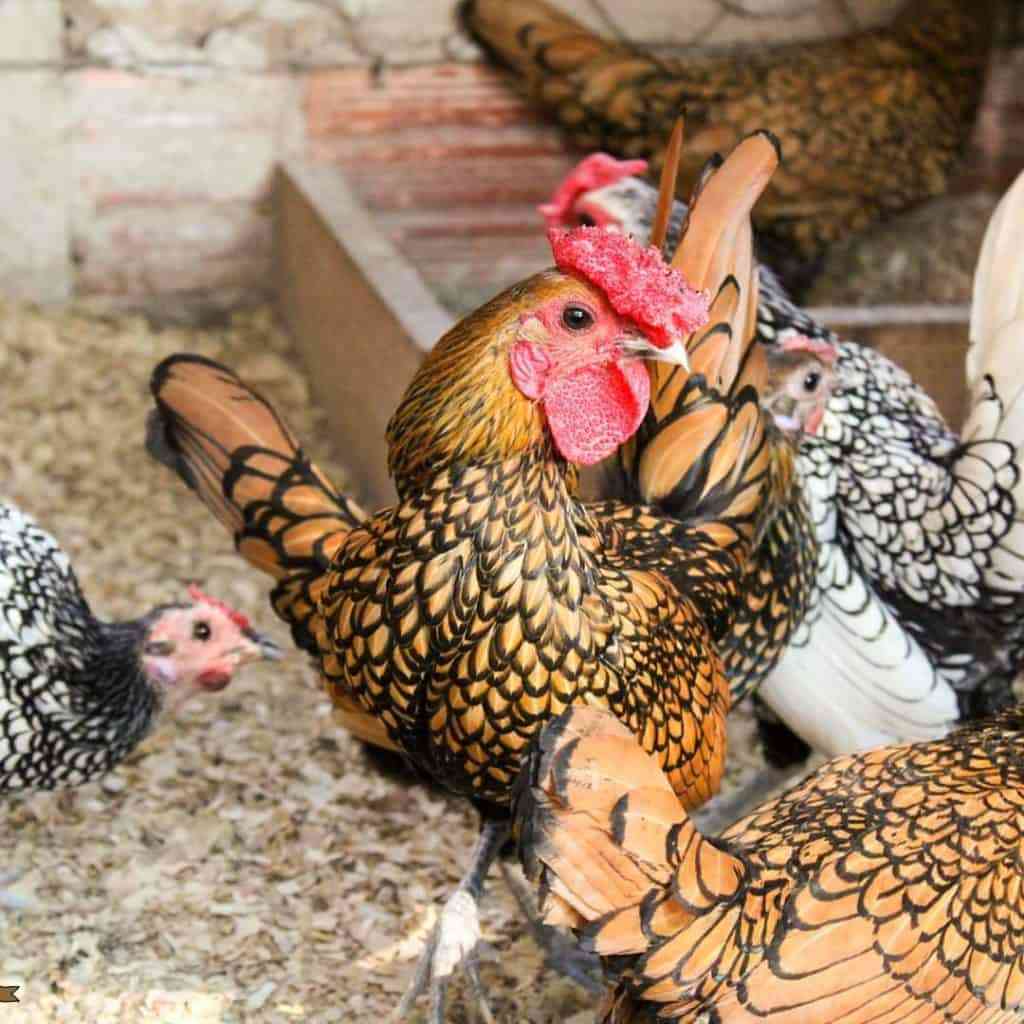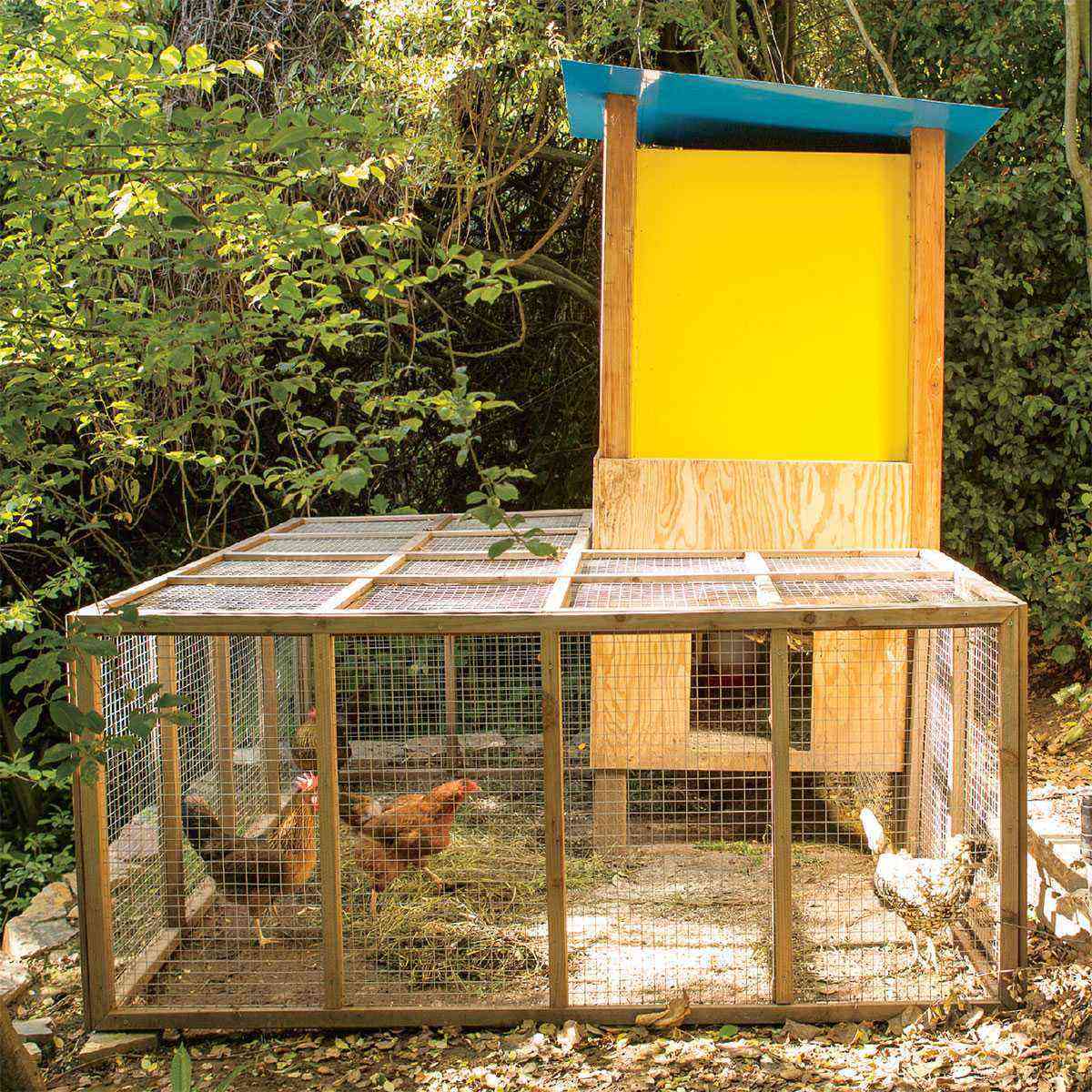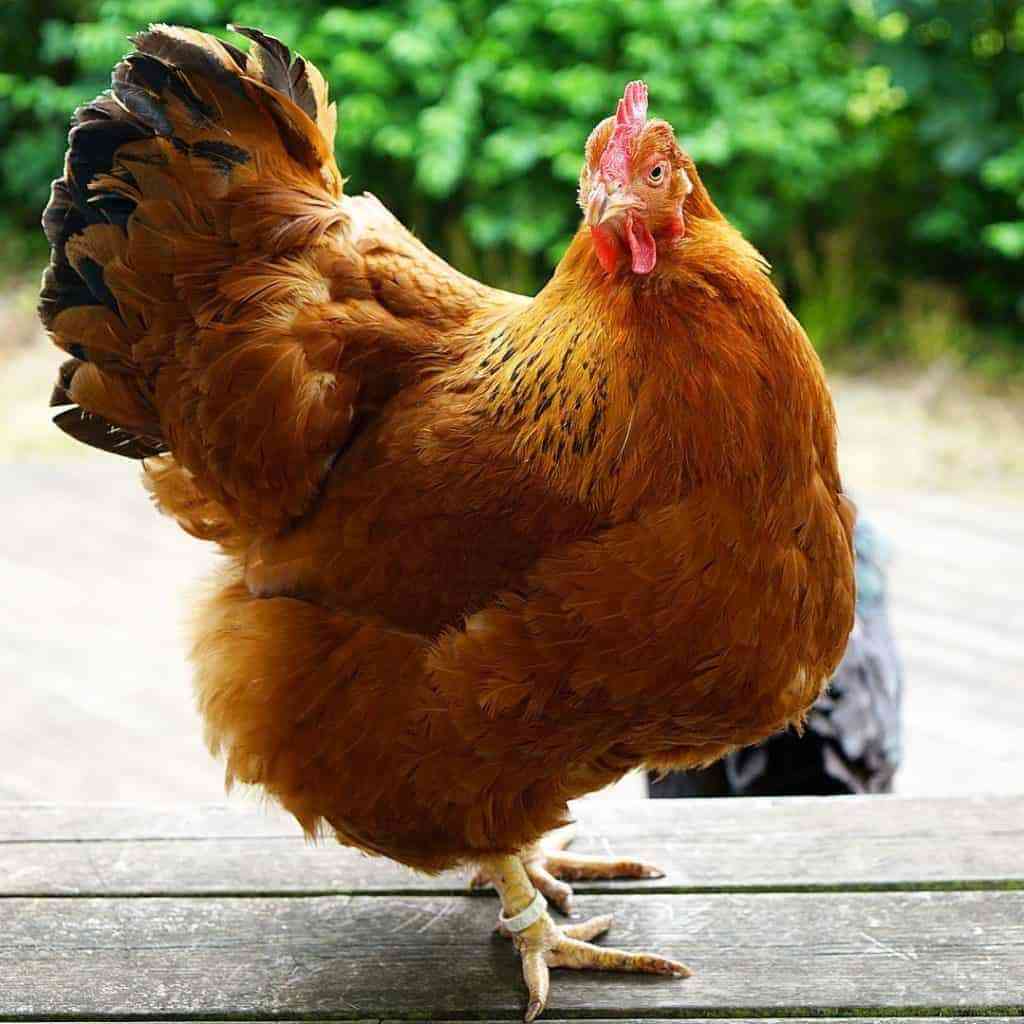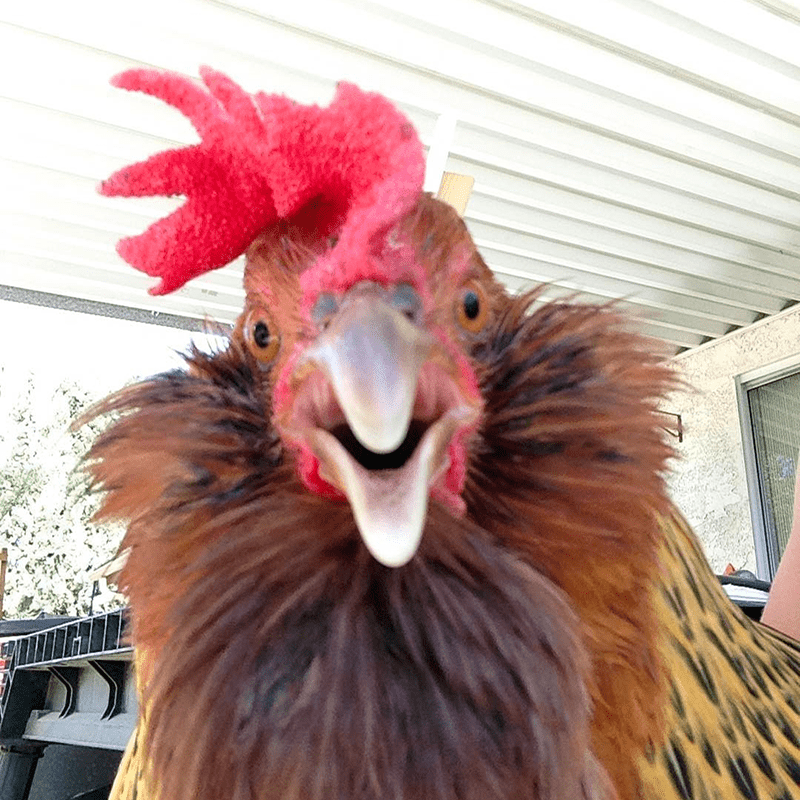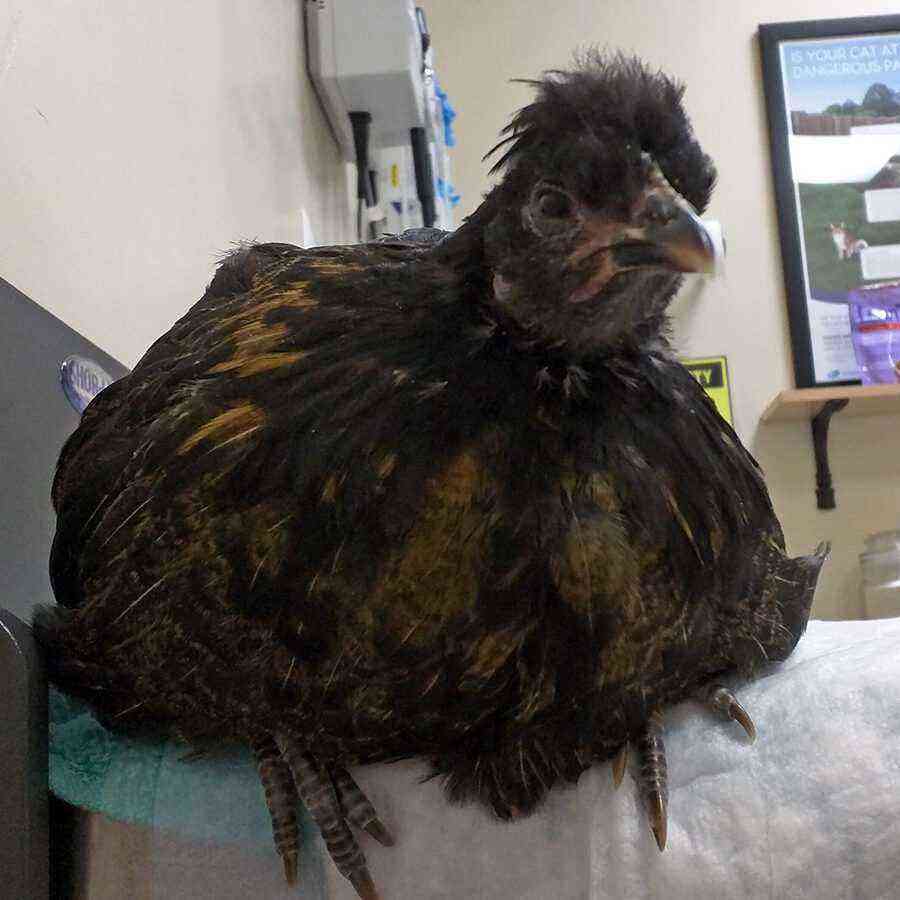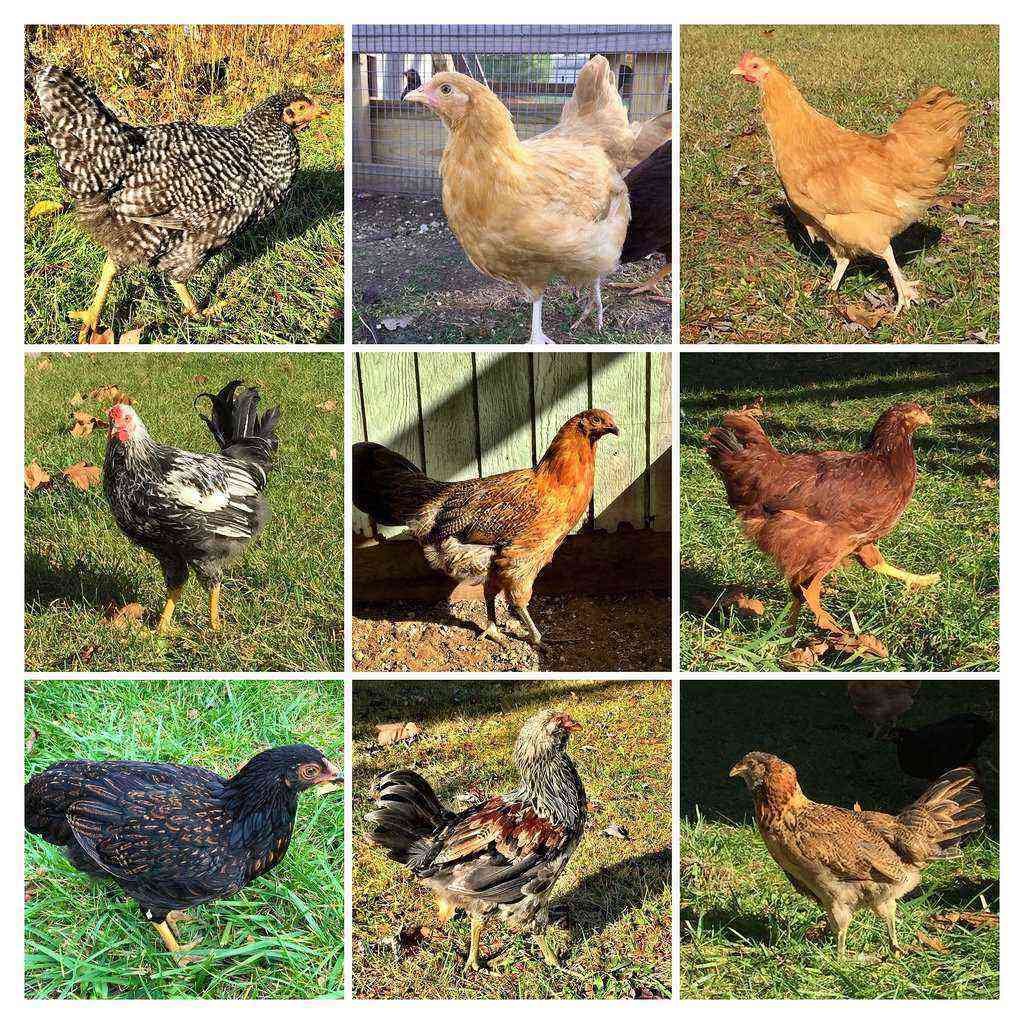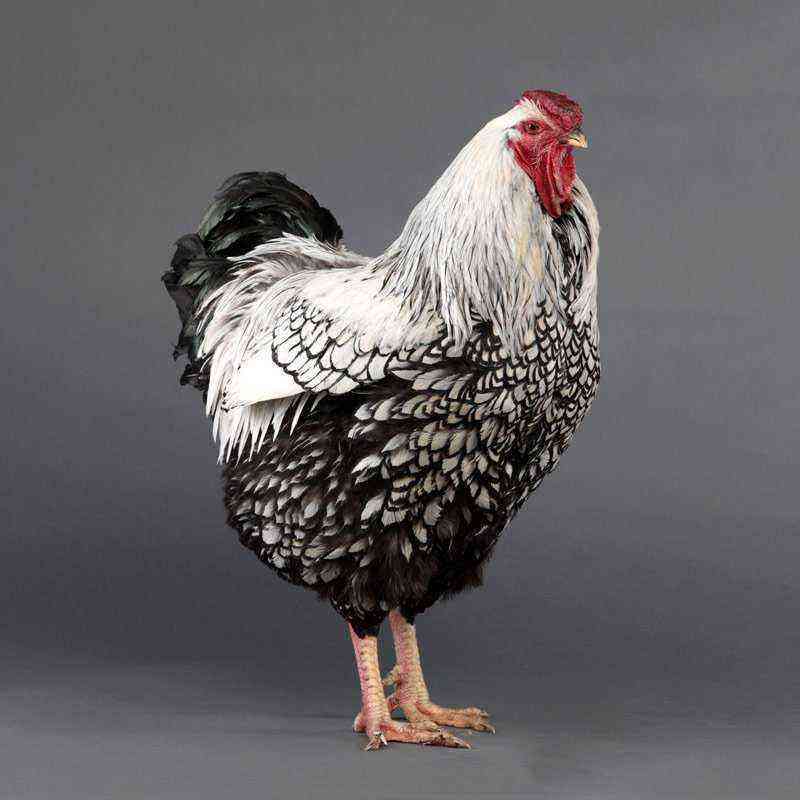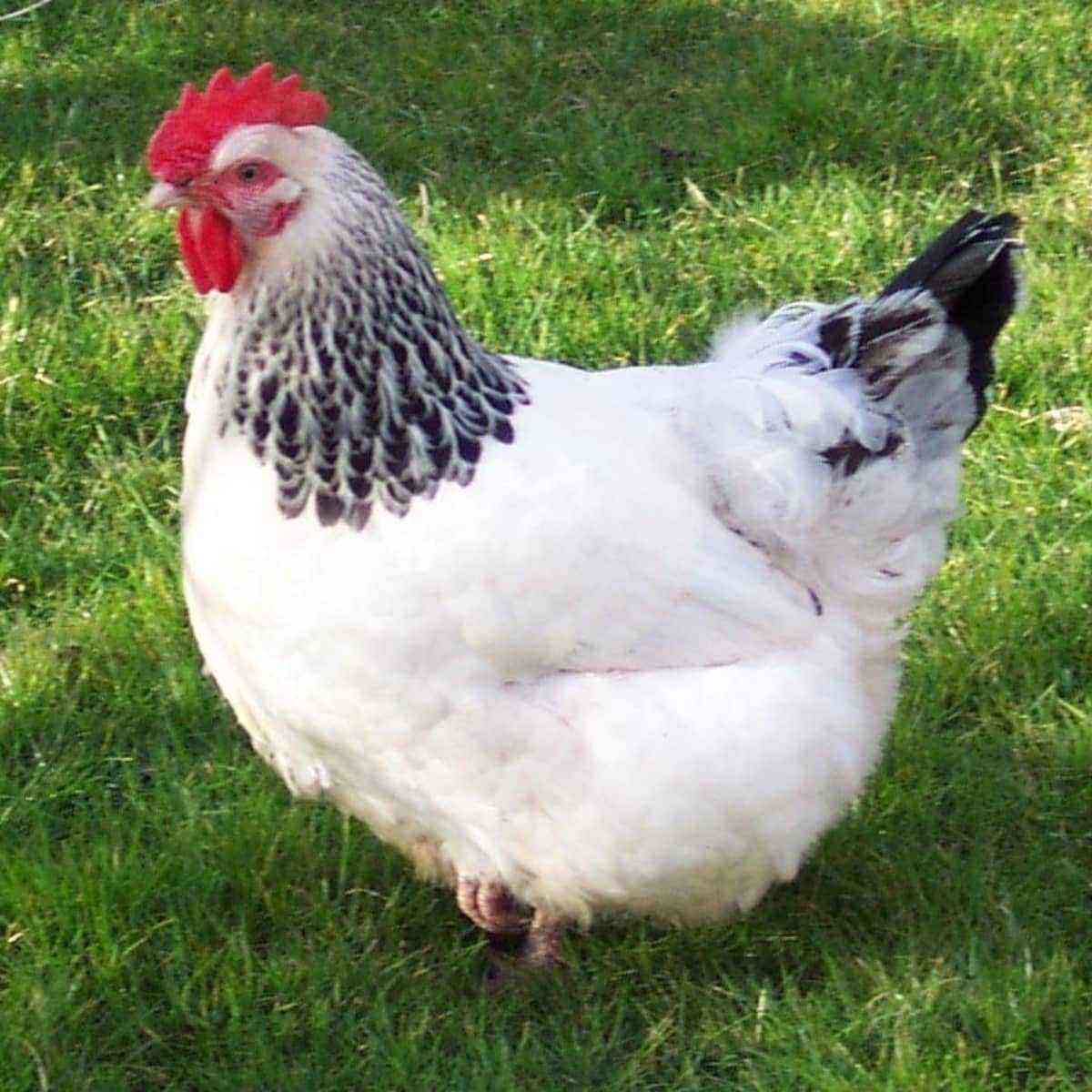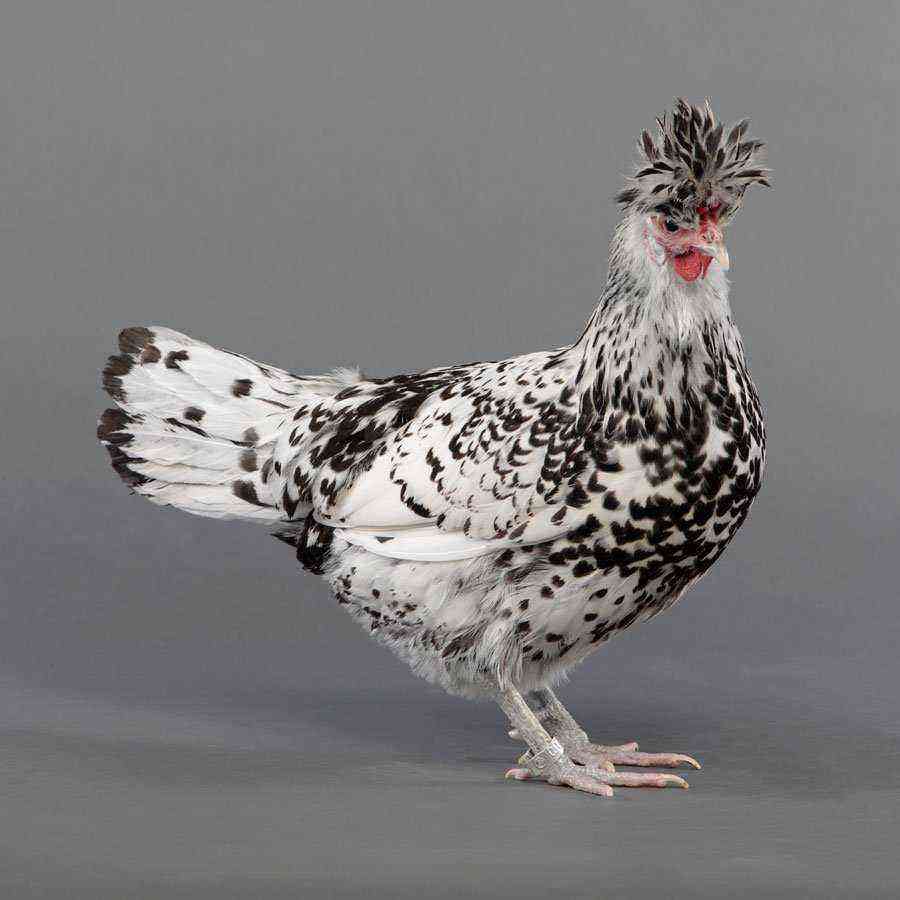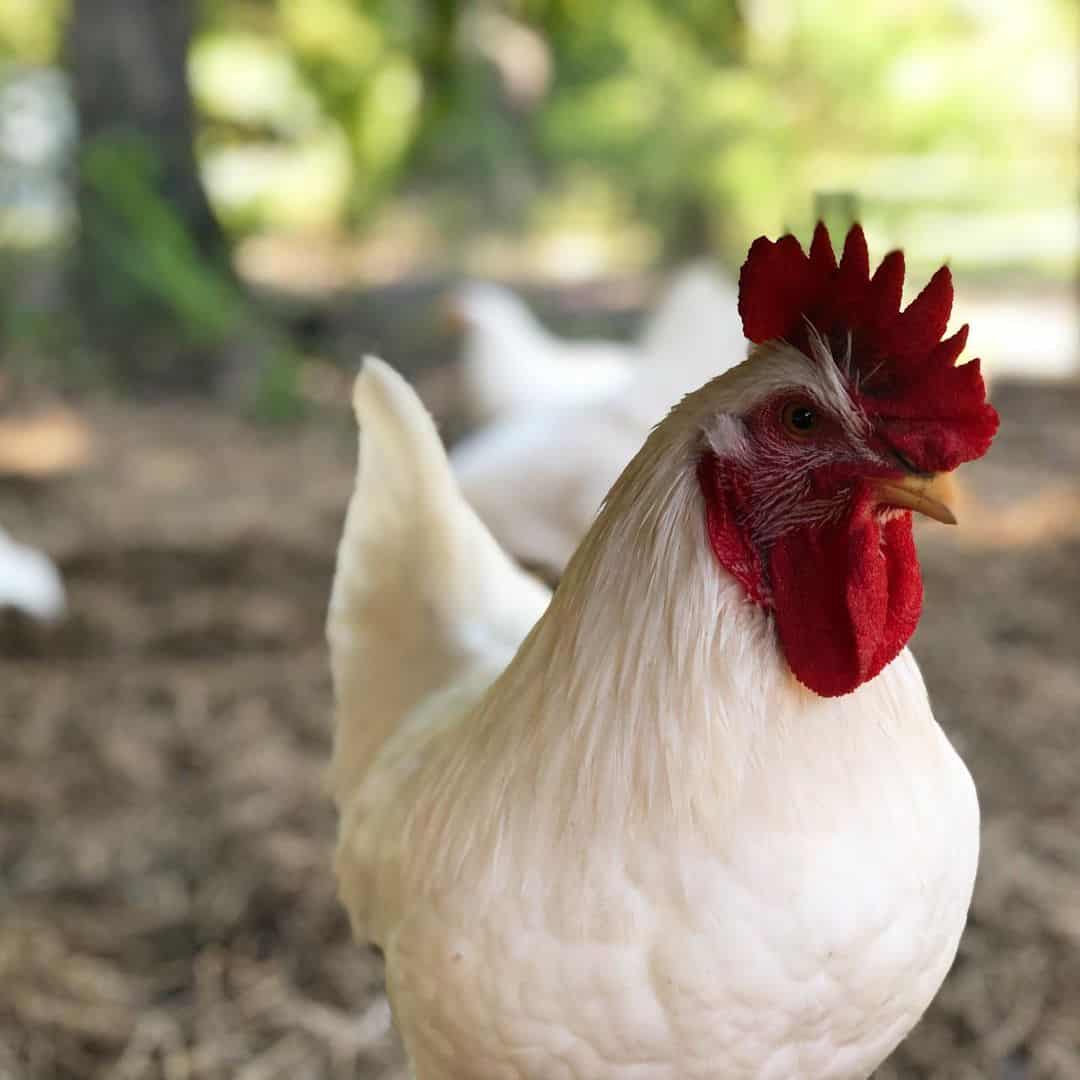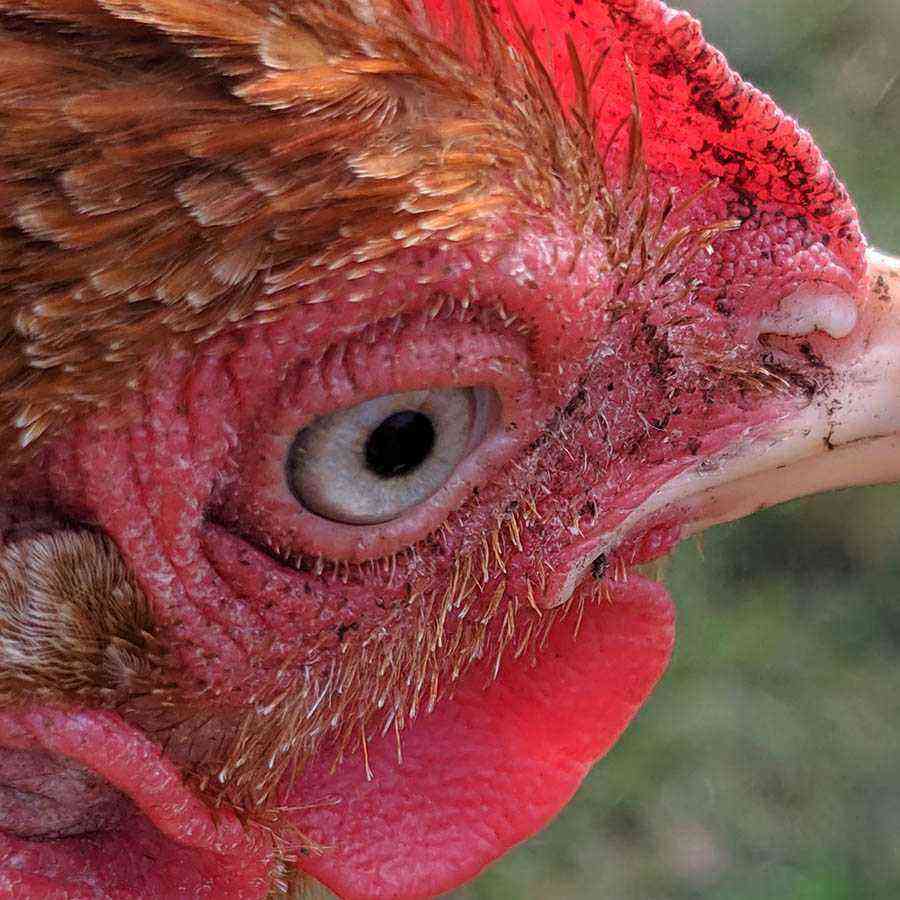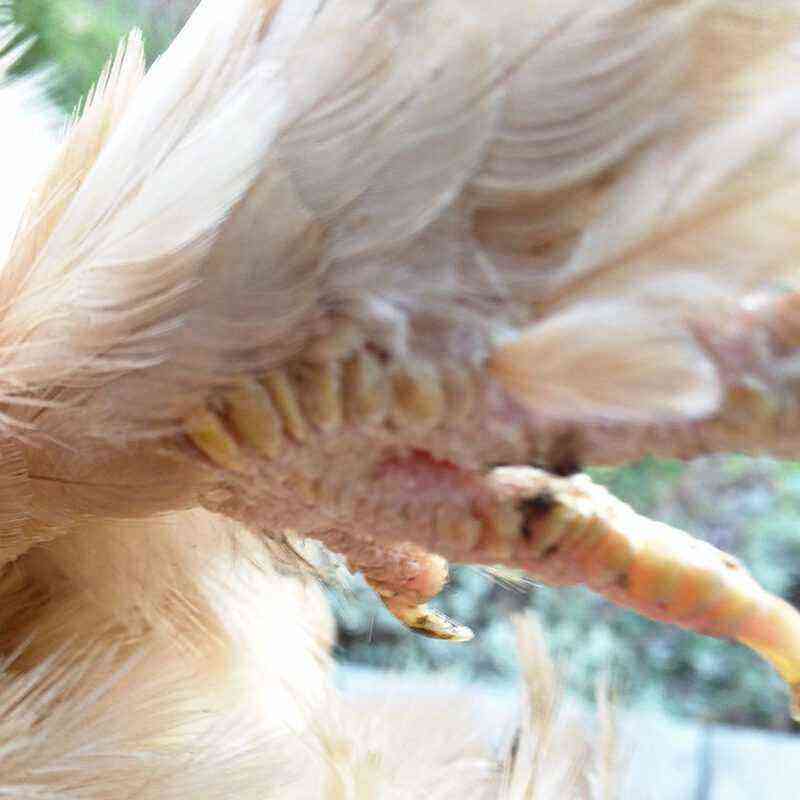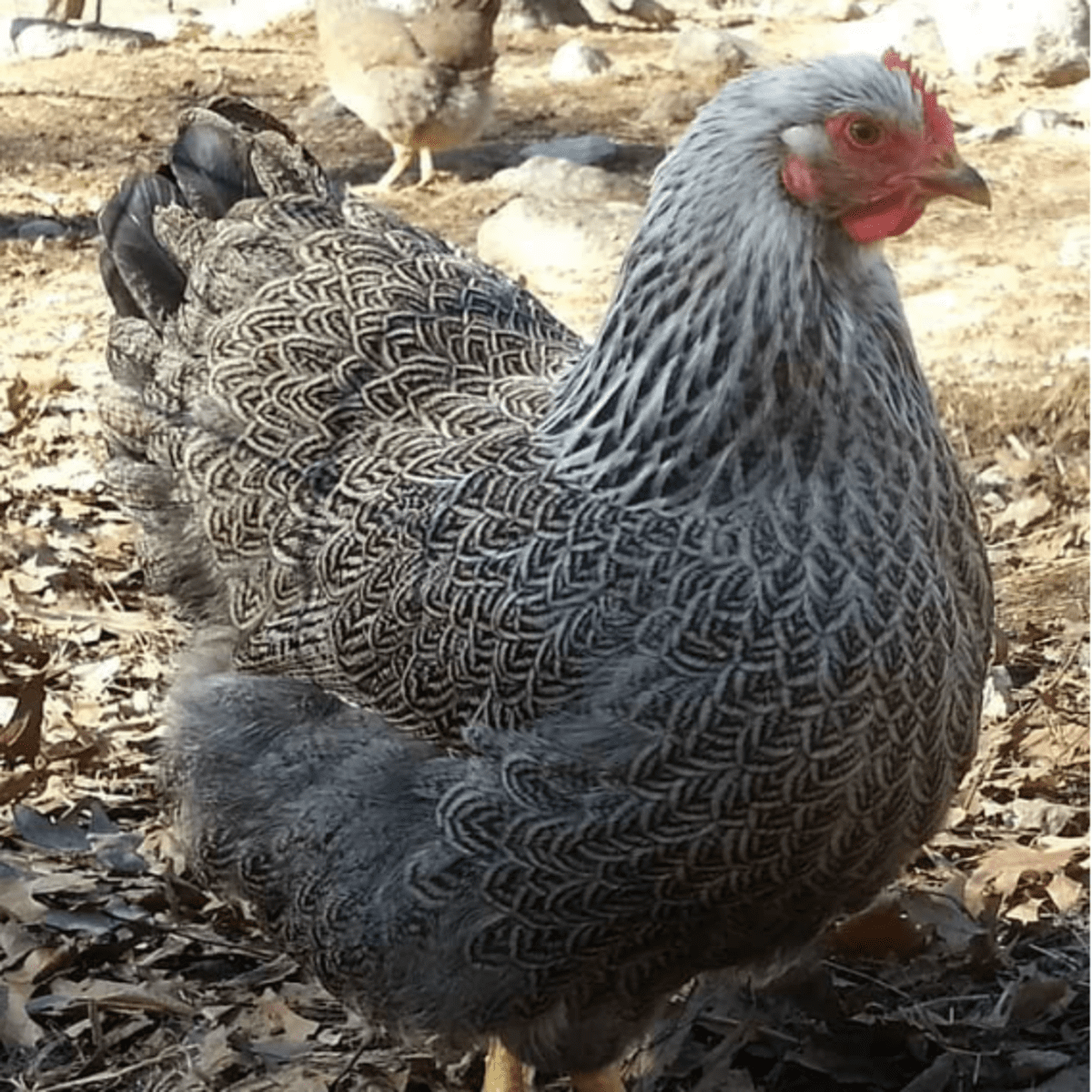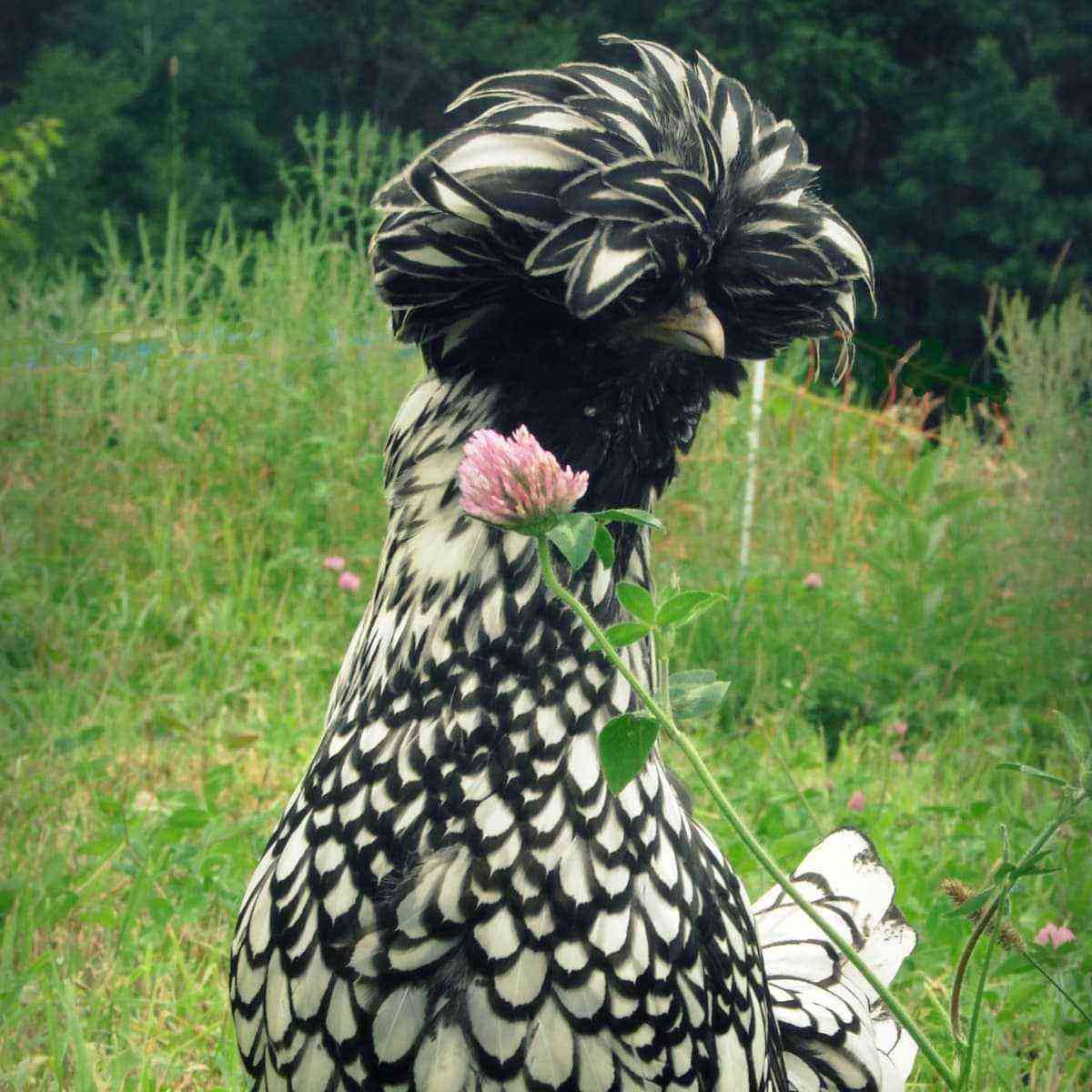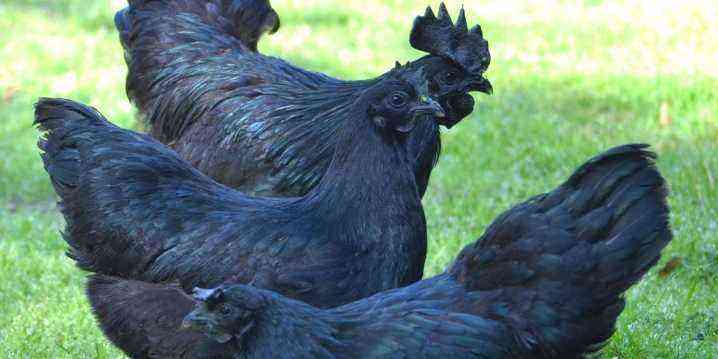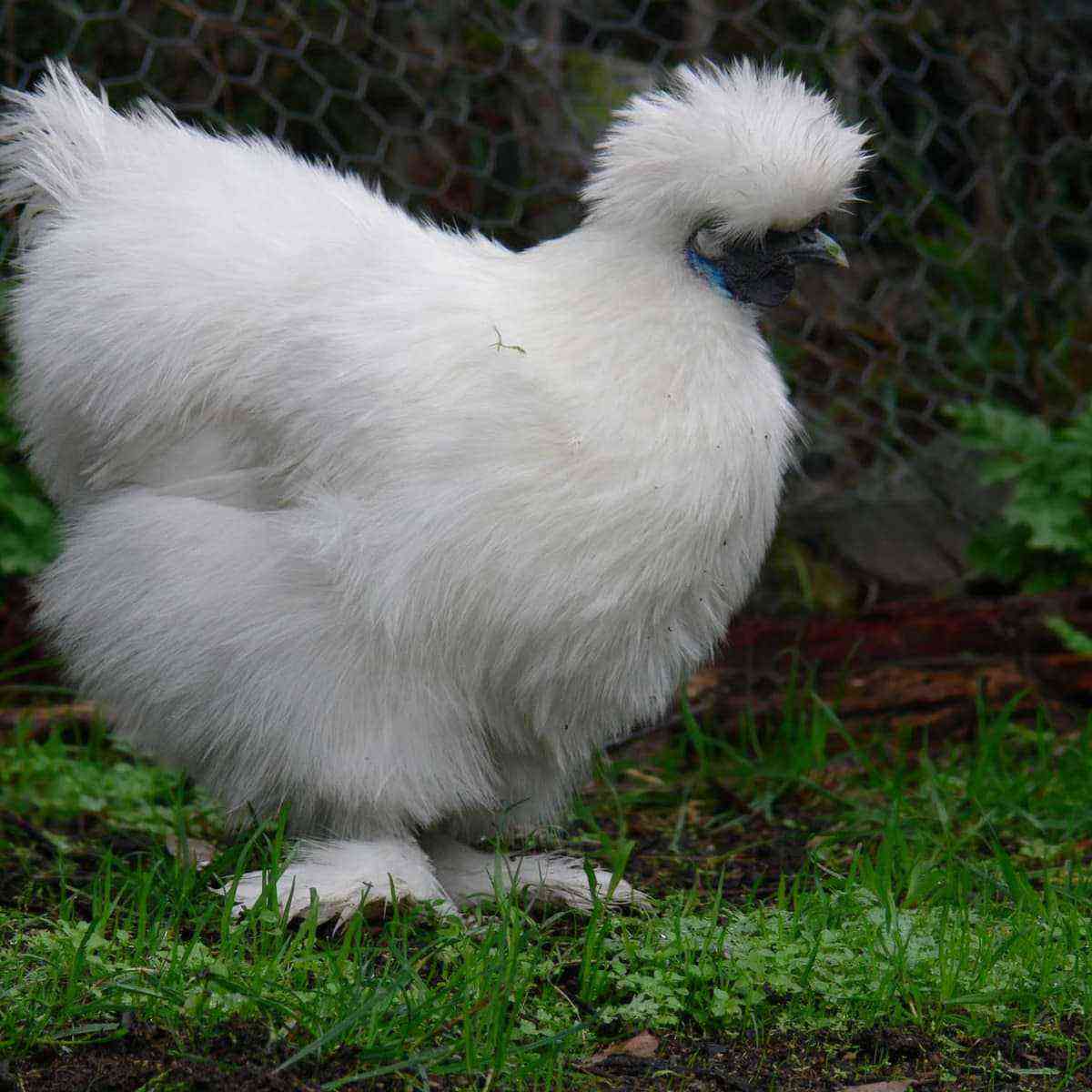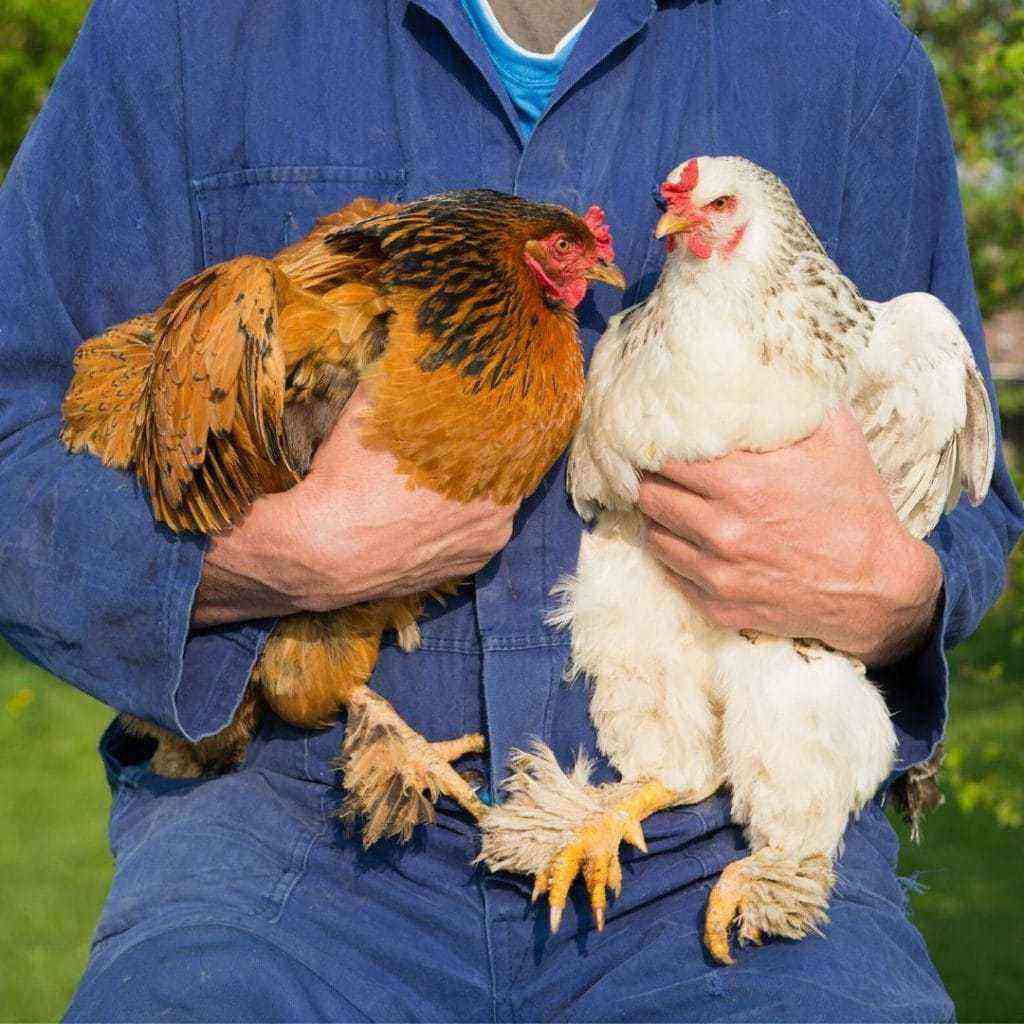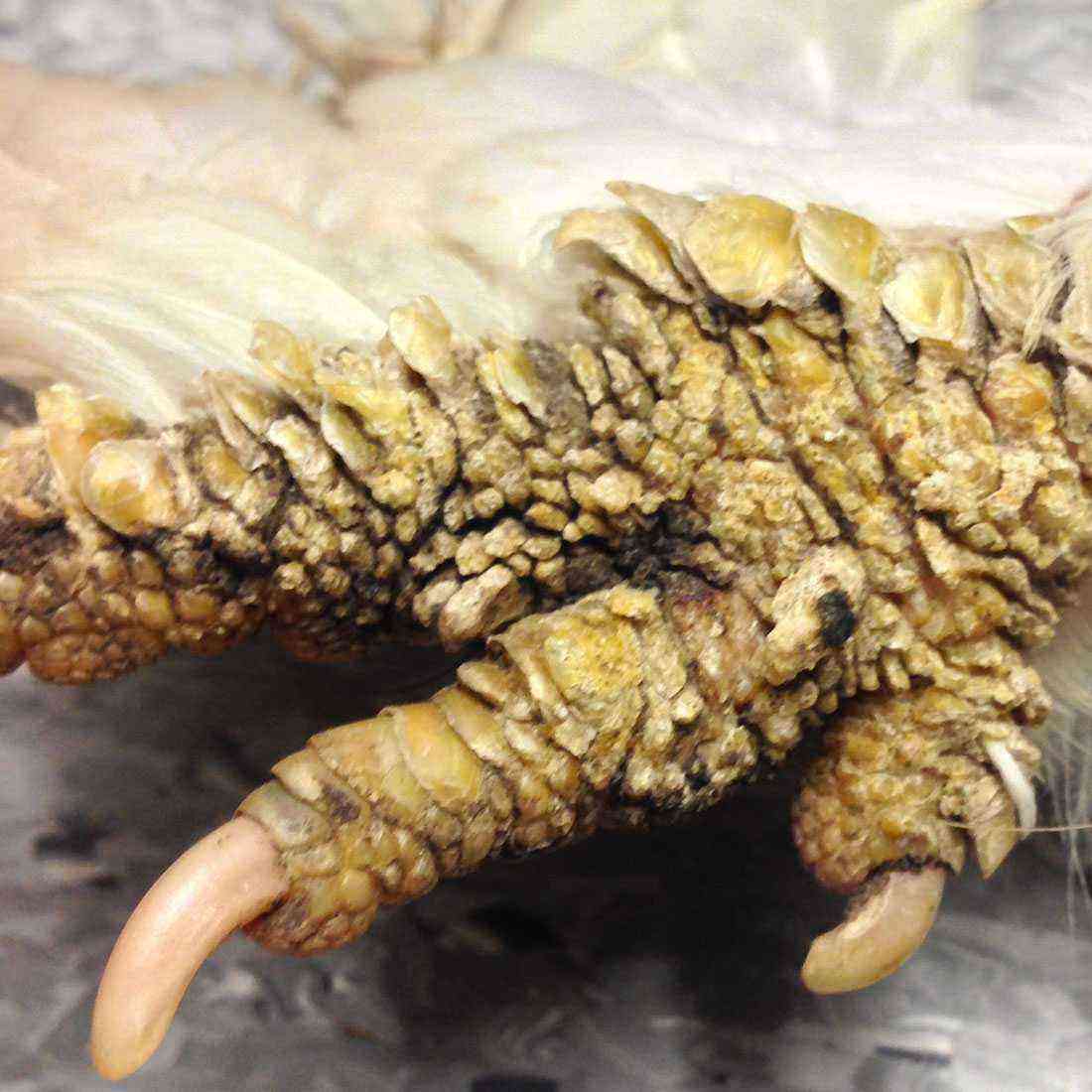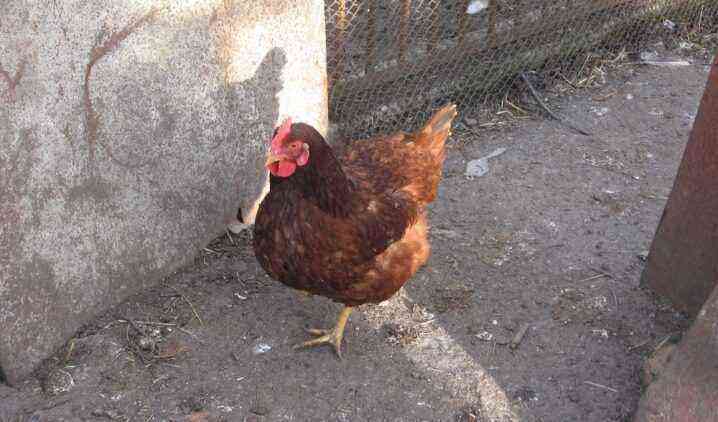Chicken eggs are an important and indispensable product of the diet and contain a huge amount of substances necessary for the body. That is why egg-oriented chickens can be found not only in poultry farms, but also in private farms. Most breeds are unpretentious in content and have a high productivity, allowing you to get over 200 eggs per year.
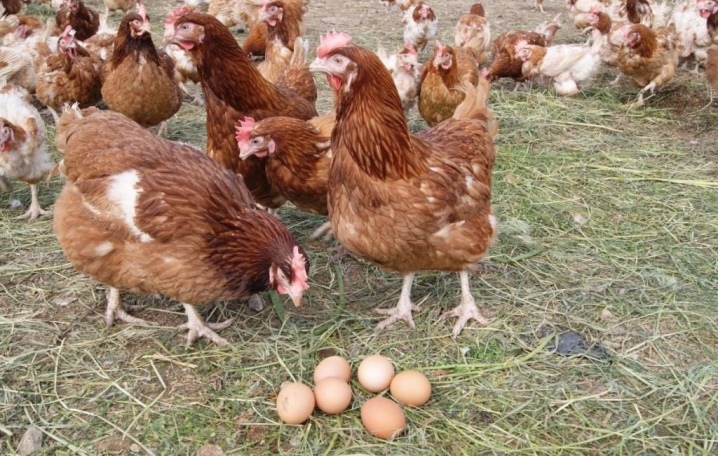
Features
Laying hens have a rather narrow agricultural specialization and differ markedly from meat and universal breeds. Of the external signs, a not too dense physique and small size can be noted: the average weight of chickens is 1,8 kg, roosters – no more than 2,7 kg. Besides, egg breeds are more early maturing than meat and universal breeds, and reach puberty by the 140th day, and some species are completely capable of producing eggs already at 125-130 days. It should also be noted that egg chickens fly well, which is ensured by their low weight, large wingspan and elongated tail plumage. Almost all laying hens are characterized by a light skeleton, an elongated body, a small head and high legs, which markedly differ from heavy and clumsy broilers.
They have a well-developed comb, painted in bright red tones and having many teeth.. Its color is a kind of indicator of the health and productivity of the bird, and a partial loss of brightness often indicates problems. Another distinctive feature of egg species is the possibility of cage keeping, which in no way affects the overall productivity of the livestock. However, for good health and high egg production of wards, their places of detention must be well equipped and convenient for birds.

As for the nature of laying hens, it also differs markedly from the nature of meat and universal breeds. Such birds are characterized by high motor activity, sometimes turning into turmoil and due to an accelerated metabolism. Among the features of representatives of egg breeds, low parental responsibility can be noted, which is why they are extremely rarely suitable as a hen. For these purposes, breeders use an incubator or lay eggs under more diligent and responsible chickens of other breeds. Another feature of laying hens is excellent appetite. This is due to the fact that the bird gives a large number of eggs, because of which its body constantly needs to replenish useful substances.
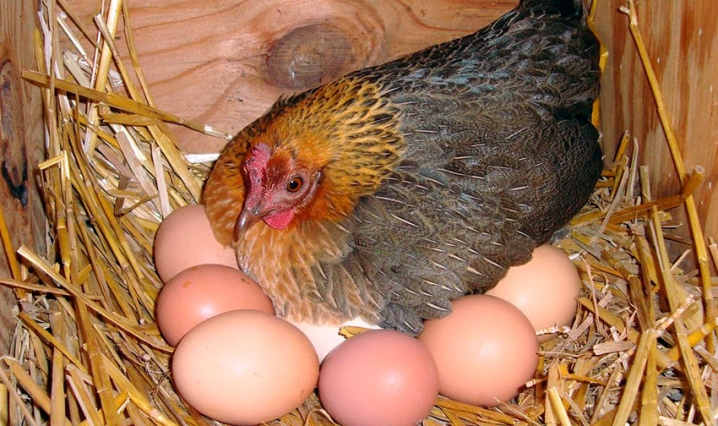
Productivity and color of eggs
The egg production of chickens is largely determined by the genetic predisposition of a particular individual and the breed as a whole. This is due to the fact that each chicken has a certain number of eggs, born at the stage of embryo formation. Their number is constant and does not change throughout life. In addition to heredity, a number of factors also affect egg production, such as diet, housing conditions and the state of health of the bird.
Despite the fact that each laying hen contains a large number of eggs, designed for 12-15 years, after 3-4 years of life, the vast majority of chickens go under the knife. This is due to the fact that the peak of egg production occurs at the age of 2-2,5 years, after which productivity declines. On average, a healthy laying hen is capable of carrying from 200 to 220 eggs per year, but on breeding poultry farms this number reaches 250-350 pieces. The record holder among laying hens is considered to be a chicken named Princess, a representative of the Leggorn breed. She managed to set a record and lay 360 eggs a year.
This was the best indicator in the entire history of observations, which no one has yet been able to exceed. It is believed that the number of eggs laid by nature is no more than 1000 pieces, but thanks to breeding work, poultry farmers were able to obtain individuals with a cell reserve of 3 and even 4 thousand pieces. Such laying hens are capable of producing 300 or more eggs per year, however, their peak productivity also falls on 2-3 years.
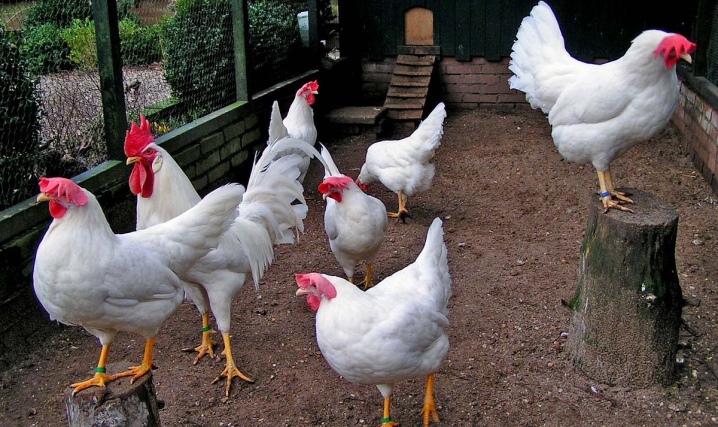
The productivity of laying hens is particularly affected by molting and stress. And if the first must be accepted as inevitable, then stress can be avoided. To do this, you should carefully select the place of keeping and do not settle birds near busy highways and other sources of increased noise. Only silence, tranquility, good nutrition and comfortable conditions can guarantee high productivity and good egg quality. The first eggs in laying hens are a little small, and usually their weight does not exceed 40-50 g. However, the situation is gradually changing, and a one-year-old chicken is able to carry large specimens weighing 60-65 g.
As for the color of the eggs, there is some regularity in this matter. The pigmentation of the eggshell or its absence depends on the breed of the chicken and the color of its plumage. However, this statement does not work 100%, and it is not uncommon for chickens to lay eggs of different colors within the same breed. In part, the color of the shell is influenced by the diet of chickens. So, with a lack of important amino acids, the color intensity significantly weakens, but the main color remains the same.
If the hen is still young and has never laid, then there is a way to determine the color of her future eggs. To do this, just pay attention to the earlobe of pullets, the white color of which will mean white, and red – brown eggs.
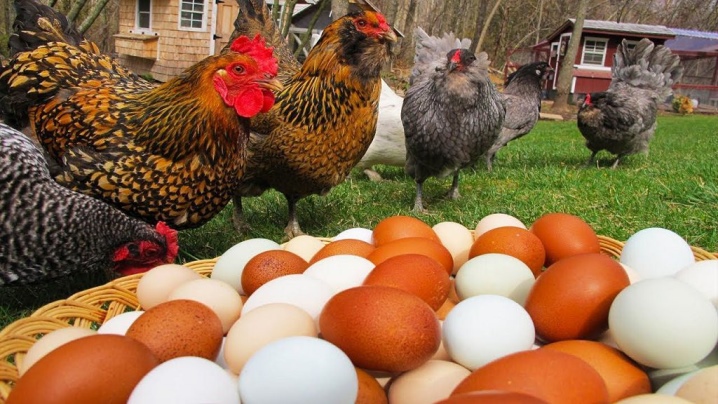
It should be noted that black hens also lay brownish eggs. A special pigment is responsible for the brown color – protoporphyrin, which is involved in the lining of the uterus during the formation of the shell.
An interesting fact is that in addition to the usual white and brown eggs, there are blue, pink, yellow and even greenish eggs. They are carried by tailless chickens, which have small growths-horns, and live in South America. This unusual breed is called araucana and is highly valued at home. It used to be thought that blue-green eggs had lower cholesterol levels and increased micronutrient content. However, it later turned out that, except for the color of the shell, they are no different from the eggs of the traditional colors, and the hype about them began to decline.
If you try to link color with productivity, then there is no interdependence here, and coloring does not affect the quantity or quality of eggs in any way.
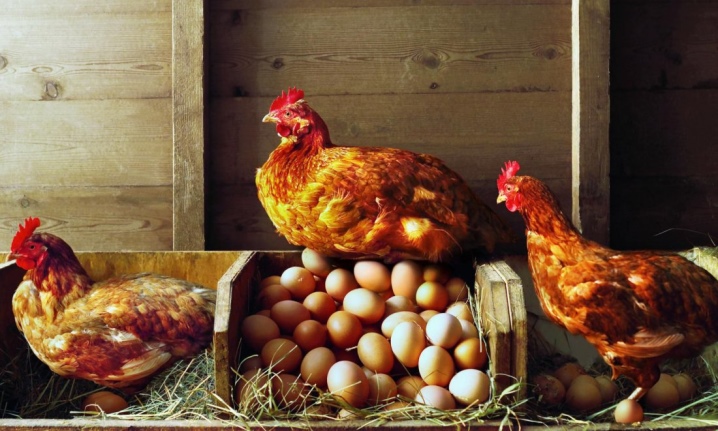
Breeds
To date, there is a huge variety of egg breeds, among which there are both natural species and artificially bred varieties obtained as a result of breeding work. Below is a rating of the best egg-laying breeds, which are beneficial to keep not only in large poultry complexes, but also in households.
Leggorn
This breed of chickens is perhaps the most popular and is actively used for industrial poultry farming. The birthplace of the breed is Italy, where, in the vicinity of the city of Livorno, American breeders conducted experiments on crossing Italian chickens with laying hens from Japan and Spain. The result of painstaking work was to obtain a new highly productive breed of chickens, capable of producing up to 300 eggs per year. Sexual maturity in leggorns occurs very early, and they are able to lay their first egg at the age of 4 months. Both hens and roosters have a light build, a large leaf-shaped comb and a long, curved neck. The plumage is most often white, but sometimes there are individuals of blue, fawn and speckled color. The cost of hatching eggs is 30-40 rubles, monthly chickens will cost 250 rubles per head, and 5-month-old individuals will cost about 500 rubles.

Russian white
This domestic breed is perfectly adapted to the local climate and Russian feed, and does not cause any difficulties in growing. Many experts recommend starting Russian white chickens as the first livestock. The breed is the result of selection, which was carried out with the participation of white leghorns and local breeds. As a result, it was possible to obtain a rather large egg-laying bird, capable of laying eggs from the age of 5 months and producing up to 260 eggs per year. The main advantage of the breed is stable productivity, which does not decrease from extreme heat or lack of feed, and absolute unpretentiousness in maintenance. In addition, chickens have a very peaceful nature and get along well with other residents of the poultry yard. The cost of chickens ranges from 30 to 100 rubles and depends on the value of the parent stock.
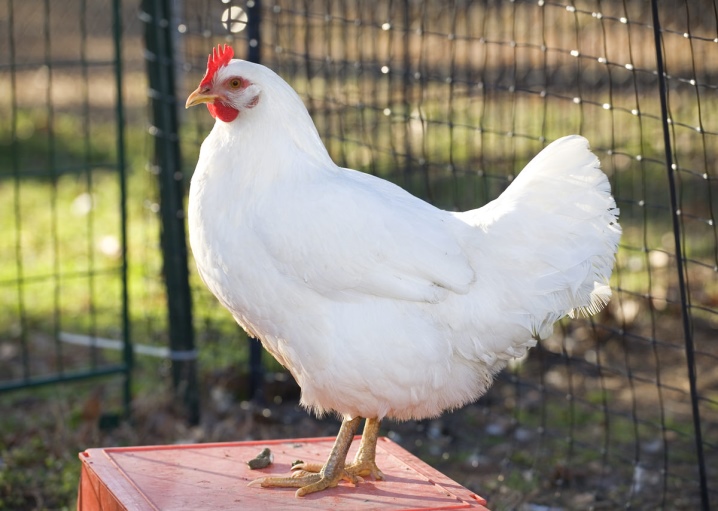
Lohman Brown
This cross is considered the most popular in Europe. It is characterized by simple maintenance and high productivity. The breed was bred in Germany, and birds of the Rhode Island and Plymouth Rock breeds were taken as parental individuals. Egg production occurs at the age of 135 days and reaches its peak by 180 days. During the first year and a half, the laying hen is capable of carrying up to 330 eggs per year, after which the productivity decreases slightly and is kept within 250-280 pieces. Among the advantages of the breed, one can note the low consumption of feed, and among the disadvantages is the impossibility of obtaining offspring in a natural way. However, this problem is characteristic of most hybrids, which does not make them less popular. The cost of an incubation egg from a breeding station is 40 rubles, and a 2-month-old chicken will cost 150-200 rubles.

Behind Brown
This hybrid cross is characterized by high egg production and was obtained from crossing Leggorns and Rhode Islands. The homeland of the species is Holland, from where it very quickly spread first through Europe and then around the world. During the first year of life, the productivity is more than 370 eggs, which allows you to get a fresh egg literally every day. However, by the age of one and a half, egg production drops somewhat, but for a long time it is kept at the level of 200-250 pieces. According to most experts, this cross has a tight relationship between nutritional balance and performance, which can be attributed to both pluses and minuses. The cost of hatching eggs ranges from 40 rubles, and for an adult 5-month-old individual you will have to pay at least 500.

Dominant
This cross is economical and belongs to the universal breeds. The egg production of an adult at the peak of productivity is at least 300 pieces per year. Birds have a large physique and have a beautiful multi-colored color. According to the color of the feathers, 12 varieties are distinguished, of which the black and blue species, as well as the Sussex, are considered the most popular in our country. The weight of an adult chicken reaches 2,5 kg, a rooster – 2,8 kg. The cost of an incubation egg is 40 rubles, and for a 4-month-old pullet, you will have to pay about 550 rubles.

Diet
The menu of chickens kept in large farms consists of industrial compound feed, which includes all the necessary substances in its composition. In private farms, a different method of feeding is more often practiced, in which, along with traditional feed, birds are fed with special complex additives – premixes. Premixes are a granular homogeneous mixture, which includes yeast, bran, oats, ground wheat and other similar components, presented in a certain dosage and compatible with each other. To date, there are several varieties of premixes: mineral, vitamin, protein, medicinal and combined formulations.
Each of them consists of a grain mixture and includes a complex of additives corresponding to the specialization of the drug. For example, mineral compositions are enriched with calcium, which is necessary for chickens at the stages of formation of the skeleton and in the process of egg production, and protein complexes dilute carbohydrate food and contribute to its better absorption. The most popular and inexpensive composition is the combined premix “Ryabushka”, which provides the birds with all the necessary vitamins and minerals.


In addition to premixes, laying hens are also fed with natural food. The approximate daily diet of an adult should include 40 g of corn, 20 g of barley, 30 g of oats and the same amount of barley. The main thing is that the total amount of the grain mixture does not exceed 120 g. Along with the grain, they give 30 g of wet mash, 100 g of boiled potatoes, 7 g of cake, 3 g of fodder chalk, 0,5 g of table salt, 2 g of bone meal and 1 g of yeast. At the same time, chickens should have round-the-clock access to fresh drinking water.
As for feeding chickens, it is fundamentally different from the nutrition of adults and has a number of features. So, young animals up to 7 days old are fed every 2 hours, including at night. Crushed boiled eggs or cornmeal are used as feed. Starting from the third day, starter compound feed is introduced, flavored with boiled and finely chopped greens. From the fourth day, wheat groats, boiled potatoes and fresh herbs are carefully added.
Week-old babies are offered a mash consisting of corn, barley, wheat and oatmeal, fresh grass, boiled potatoes and fresh carrots. The frequency of eating from the eighth day is reduced to 7-8 times a day, and a little potassium permanganate is mixed into drinking water. After the chickens are 14 days old, boiled fish and bran are added to their diet, and feeding is carried out 6 times a day. From the age of one month, the chicks are released into a common walking yard and begin to give ground grain feed, and from a month and a half, the young are completely transferred to adult food.

Content at home
Before you start growing laying hens in a private backyard, you need to be well prepared and create optimal conditions for them. You can keep a bird seasonally or year-round. In the first case, chickens are purchased in early spring and kept until the onset of cold weather. For summer placement, laying hens will have enough shed and walking area, but for year-round living, you will have to build a capital chicken coop. At the same time, it is necessary to ensure that in winter the air temperature in the room does not fall below 10 degrees, there is no wind from the windows, and there are no drafts on the floor. To fill the need for natural light in the chicken coop, fluorescent lamps should be installed at the rate of 5 W / m2, thereby bringing the daylight hours to 12 hours. Good results are obtained by using infrared lamps.
With year-round maintenance, two methods of growing birds are used: floor and cage. Floor keeping implies the presence of one square of area for every five heads, since with a denser placement, the chickens become crowded, they experience stress and begin to rush worse. The room must be equipped with nesting houses and perches, as well as feeders and drinkers with water.
In addition, a walking space is also equipped, the main requirements for which are a high fence, distance from noise sources, the presence of grass, a large canopy and the presence of a drinking bowl with a feeder.
With cellular content in one cage, no more than seven individuals are located, and the floor is made under a slope, for rolling eggs. When making cages according to your own drawings, it must be taken into account that for single placement, each adult should have at least 0,5 m2, for group placement – no more than 6-7 individuals per m2. The advantages of cage keeping include easy cleaning of cages in which all the waste products of birds fall into the pan, the ability to install cages one on top of the other, which allows you to increase the number of chickens without increasing the area of uXNUMXbuXNUMXbthe chicken coop, as well as reducing the risk of transmission of infection from one individual to another. Besides, small predators will not be able to get close to the chickens and eat the unfortunate birds. The disadvantages include the likelihood of stress arising from the closed space, combined with the high activity of chickens.

How long do eggs incubate?
Regardless of the breed, the mother hen incubates the chicken for 21 days. However, a daily delay is quite acceptable, increasing the incubation time to 22 days. If after this time the chicken did not appear, then this indicates a pathology of the formation of the fetus or its death. In order not to cause unnecessary trouble to the chicken, all the eggs on the sixth day from the start of incubation are checked with an ovoscope, while removing unfertilized and suspicious specimens.
One chicken is able to incubate up to 15 eggs at the same time, which allows you to get numerous offspring in just three weeks. The body temperature of the chicken is 40 degrees, which is enough to warm up so many eggs. During the day, the mother hen independently turns the eggs up to 50 times, which ensures uniform heating.
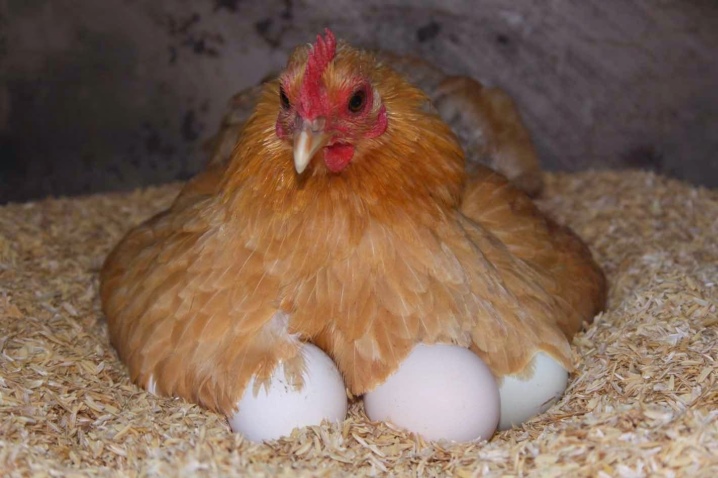
Breeding
In the process of evolution of egg-laying breeds, the maternity gene for many of them was hopelessly lost. An active laying hen can be very difficult to lay on the clutch, and therefore breeders use a “surrogate mother” or an incubator. In the first case, the eggs are laid under a more responsible hen and wait for the offspring to appear. For incubation breeding, it is recommended to choose incubators with an egg auto-flip mode and a thermostat. A good model for beginners will be the BI-1 Layer, which can accommodate from 36 to 104 eggs, depending on the modification.
The device is equipped with a viewing transparent window located on the top panel, which allows you to monitor the condition of the eggs without opening the lid. In addition, the incubator is equipped with temperature and humidity sensors, runs on 220 V, and in the absence of electricity can run on battery. The working temperature regime is 33-34 degrees, and the appearance of chickens occurs on the 21st day.
Hatched chicks are left in the incubator or transferred to a special nursery for drying, after which they are transplanted into a box or box with a newspaper-lined bottom. The air temperature during the first two days should be maintained within 32-35 degrees, on the third day – 28-29 degrees, after which it is gradually reduced to 24 degrees.
As a heater, you can use an incandescent lamp or a plastic bottle filled with hot water and wrapped in a thick cloth.
Tips for choosing
When buying egg-laying hens, it would be wiser to read the reviews of owners from your own region. This will help to choose the right breed and take into account as much as possible the features of its maintenance and care in relation to its climatic conditions. If the bird is chosen for a personal farm, then it is not necessary to buy a purely egg direction, which is used for the industrial production of eggs. It is better to opt for meat and egg breeds, which, after the fall of egg production, can be used for soup. The most popular universal species include the red white-tailed, Yerevan, Adler silver and Kuchinsky jubilee breeds, as well as Rhode Island and New Hampshire. These birds gain weight up to 3,5 kg and produce up to 220 eggs per year. Many of them have not lost their maternal instinct and can be used for natural breeding.
Possible problems in cultivation
Despite the unpretentiousness of most egg breeds to the conditions of detention, some difficulties in their cultivation can still arise.
- If chickens have alopecia – that is, they grow bald and their feathers fall out, then the matter is most likely in the wrong food, which lacks calcium, iodine, phosphorus, sulfur and manganese. Revising the menu and including vitamin-mineral complexes in the diet will help prevent this process.
- Fatigue and poor appetite can be signs of beriberi. In such cases, fresh herbs, fish oil and a sufficient amount of ultraviolet light will help.
- In order to avoid cases of cannibalism, it is necessary to carefully monitor the condition of the skin of birds and immediately remove injured individuals.
- If the chickens peck their fingers into blood, this means a lack of nutrition, and the pecked head of a neighbor indicates the establishment of leadership.
- Inflammation and prolapse of the cloaca often occurs from eggs that are too large.
When the livestock is affected by colibacillosis, salmonellosis, gastroenteritis and meningitis, as well as for the prevention of these diseases, chickens are given Levomycetin. It does not conflict with other drugs and does not lead to a decrease in productivity.

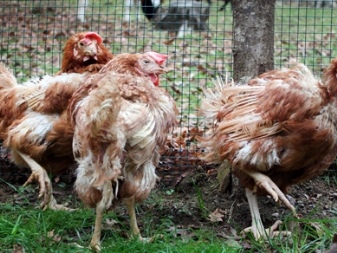
See below for more details.
